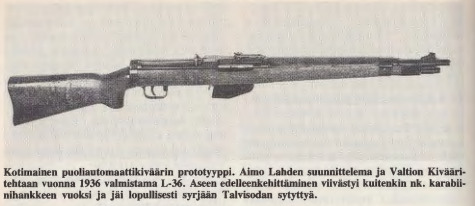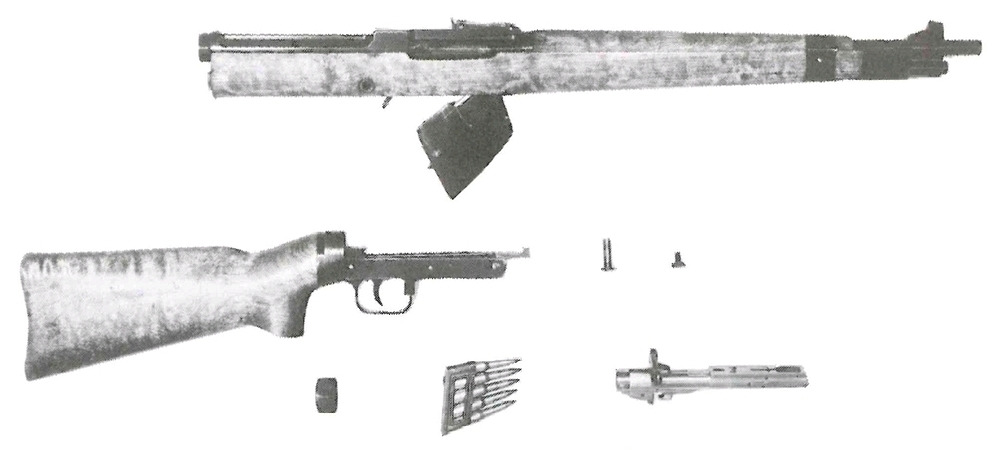Good day, everyone. Today we will discuss Finnish self-loading rifles. More specifically, we will discuss the L-36 rifle from Aimo Lahti.

- Caliber: 7.62 mm x 54 R
- Length: 1130 mm
- Barrel length: 540 mm
- Weight: approx. 5 kg
- Magazine: 5, non-removable
- Country of origin: Finland
- Production status: prototype manufactured in 1936

At that time, in Finland, Aimo Lahti was the chief designer of small arms for the Finnish military. Therefore, for obvious reasons, he was tasked with developing this semi-automatic rifle. The official order for this was placed in October 1934, and it took until the fall of 1936 before the first prototype was completed. As was customary for Lahti’s designs, this first prototype was named the L-36. The rifle’s automatic mechanism was well chosen—a rifle with a gas mechanism and a gas piston. Unfortunately, however, in other respects, this rifle was far from being a practical military weapon. The rifle had a non-removable 5-round magazine, loaded with a clip, similar to the Mannlicher magazine. The problem was that the L-36 magazine could not be loaded from the top. To reload the rifle, the soldier had to turn the rifle upside down, open the non-removable box magazine, load a 5-round clip, close the magazine cover, and cock the rifle by pulling back the lever on the top of the rifle. It turned out that this process was difficult to perform under fire. In general, the L-36 semi-automatic rifle was far from being an effective combat weapon, and its design had some serious flaws that were so obvious that the weapon remained a prototype. As a result, further development of the weapon was delayed and finally came to naught after the start of the Winter War.

The following factors had an impact.
- Semi-automatic rifles are expensive. Especially for a country like Finland, which, although proud, is not the largest or richest. In general, no money was allocated to finance semi-automatic weapons, and there was a lack of production capacity.
- Technical shortcomings + inferior performance compared to Soviet trophies. Although the rifle was relatively easy to disassemble, it was nevertheless inferior to Soviet models and was not particularly convenient to use
- The Finns’ distrust of “gas-action” weapons. Such automatic weapons were met with distrust among Finnish gunsmiths and the military, at least at that time.
- After the Winter War, the Finns had a large number of captured SVT and AVS rifles, which were superior to the L-36 in every way: they had larger magazines (10 rounds for the SVT and 15 for the AVS) and were also detachable, so there was simply no point in using the L-36.
In the future, I plan to study the Finnish semi-automatic rifles in more detail and make a big post about them. Consider this post… а teaser.
Special thanks to @_DELAVR for providing additional photos of this rifle.